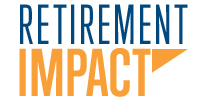Resolution season is upon us. January through March are the peak motivation months. That special time of the year when people are eager to make positive strides toward physical, financial, professional, or personal goals. On average, 42% of Americans make money-related resolutions. However, in less than 6 months, half of the once dedicated forget about their goals.[1] But, as we all know, it takes longer than 6 months to reach a meaningful savings goal.
So, how can you, as a plan sponsor, use the resolution momentum to inspire your employees to save for retirement? This article we will discuss holistic ways to promote financial wellness among your employees as well as plan design tips aimed at increasing participation and savings rates.
Employee Savings Goals
We’ve all heard the saying, “if you don’t know where you’re going, any road will get you there.” However, without a financial goal, many are left unprepared and money has a way of slipping away when there is no clear savings path.
As a retirement plan advisor, my job would be so much easier if every one of your employees were focused on saving for retirement; but the reality is, if they are financially stressed, retirement is the last thing on their minds. Depending on the age and financial situation of your workforce, top concerns may range from meeting monthly expenses, to paying off debt or saving for college, to caring for aging parents. It’s important to understand that saving is a journey and even though each of your employees may be in a different spot, however, the act of saving needs to be constant.
TIP: Encourage your employees to maintain an active list of financial goals. This will help them set a savings path and may help you to determine a more focused financial wellness program or specific education topics.

Savings Buckets
The term savings bucket is not new to you as a plan sponsor, as you may have regular conversations with your recordkeeper about them. However, it may be a brand-new concept for your employees. The three-bucket principal is a way of simplifying the art of saving. First you fill bucket #1 and once it is full, savings begin pouring into bucket #2, then it is on to the final bucket. Each bucket holds savings for a specific goal: Bucket #1 is reserved for Emergency Funds; Bucket #2: The Middle Bucket; Bucket #3: Retirement Bucket.
Plan Goals
Beyond the holistic efforts of financial wellness that address the financial hurdles your employees face, there are steps you can take from a plan level that can motivate positive savings habits. Automatic features such as auto-enrollment and auto-escalation are two plan design features that can help you pursue goals of increasing participation and deferral rates.
Auto-enrollment is an excellent plan design feature to help get new hires saving from the get-go. In fact, Vanguard research shows that plans with auto-enrollment boast participation rates reaching 90% whereas plans with voluntary enrollment fall short at 63% participation.[2] You may also consider adding features that enroll #_ftn1#_ftnref2(or backsweep) workers who may not have been previously enrolled in your 401(k) plan.
Participating in the plan is great, but you want your employees to be saving at the highest possible rate. One way to help is by implementing an auto-escalation feature. Consider enrolling (or re-enrolling) employees into the plan at a modest 5% savings rate, then increase the deferral by a set percentage each year until a more meaningful rate is reached. Optional formulas:
| Deferral GOAL | Starting Deferral | Annual Increase | Years to Accomplish |
|---|---|---|---|
| 10% | 5% | 1% | 5 years |
| 10% | 5% | 2% | 2.5 years |
| 15% | 5% | 2% | 5 years |
Always Moving Forward
Creating a culture for your employees to save begins with a dialog; we are happy to help with that conversation. At Retirement Impact, we feel that employee education and empowerment starts with the plan sponsor. Thus, we aim to provide resources and tools that help you help your employees move toward their savings goals.
This information was developed as a general guide to educate plan sponsors and is not intended as authoritative guidance or tax/legal advice. Each plan has unique requirements and you should consult your attorney or tax advisor for guidance on your specific situation.
Related Posts
-
No "One Size Fits All" Plan Retirement plans come in all shapes and sizes: DC…
-
Your Mid-year 401(k) Plan Check-up and Tune-up As we round the corner to 2018, I…
-
Recently the EBSA division of the Department of Labor (DOL) released a proposal that was…









